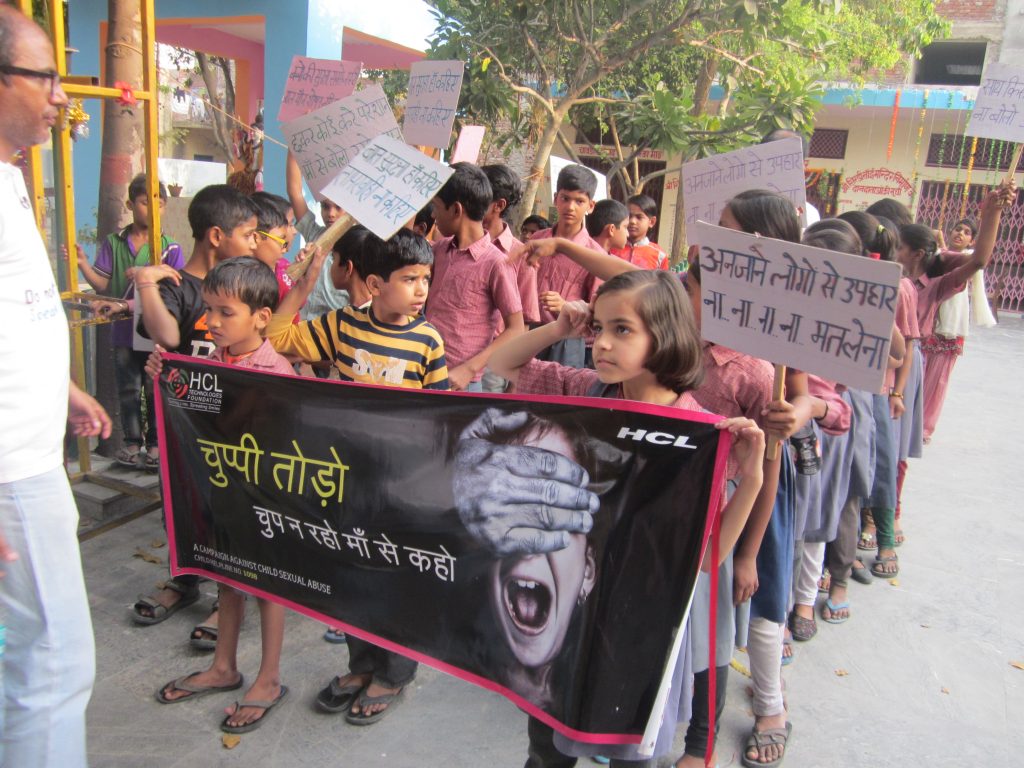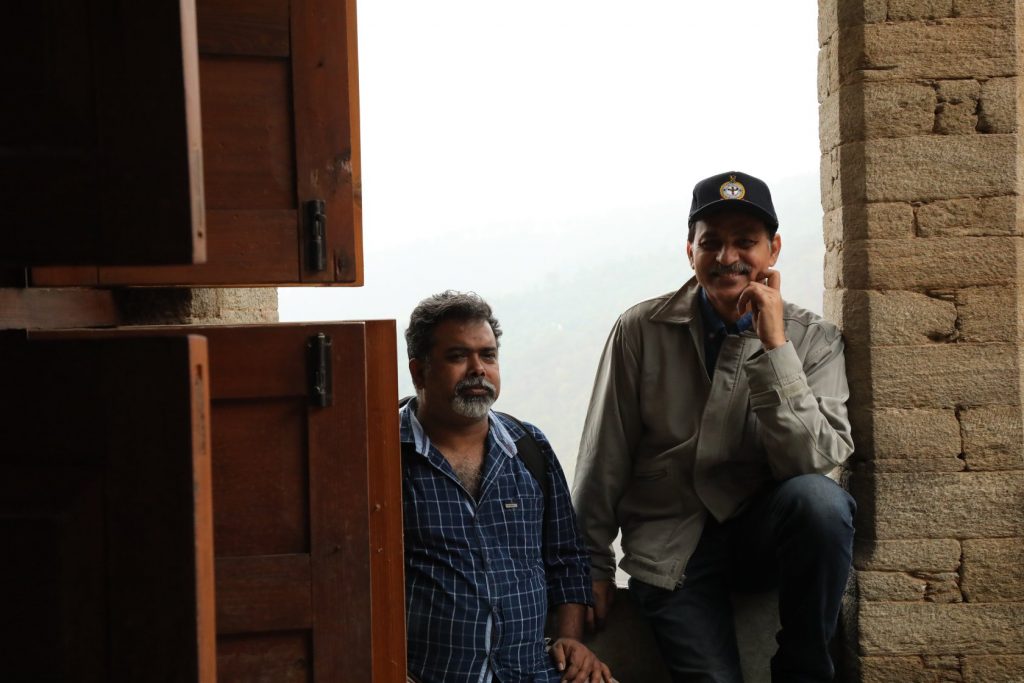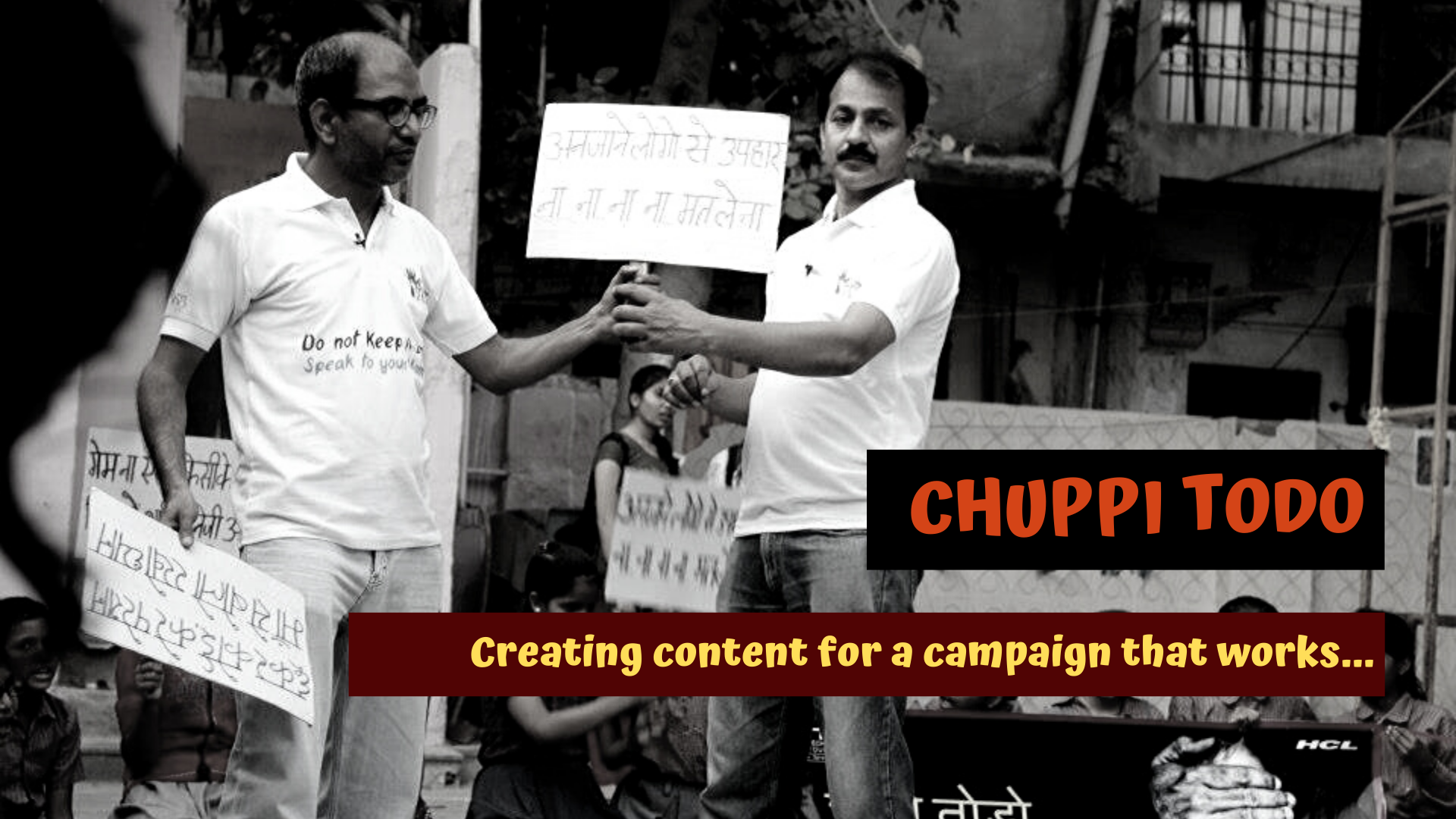My relationship with Sanjay Singh used to be bitter-sweet; 80% bitter, I should say. That’s when he was in ‘assignment’ and me in ‘production’, at Headlines Today.
That’s the norm. The assignment (input) brings in the news and thinks we are doing ‘nothing’ with it; and the production (output) believes that the assignment is doing ‘nothing’ – by not getting the right stories. But yes, after spending 15 odd years breaking news, both of us realized that we were both doing ‘nothing’.
At least not anything we considered worthwhile any more – no offense please, to all my newsroom friends. So we quit news and went separate ways.
Sanjay always had this ‘benevolent’ air about him. Although it made him a complete misfit in the dogs and cats world of breaking news, he became a perfect fit in the social sector.
I mean, for how long can a trained paleontologist stay a news reporter?? He has to somehow start digging fossils again!!
Sanjay turned ‘activist’ and went campaigning; and what a campaign it was.
‘Chuppi Todo’ is about sexual abuse of children; it’s about good and bad touch – largely a taboo subject just about 10 years back, in 2010, when he started the campaign.
After quitting his job, while doing a PG Diploma in Child Rights at the Tata Institute of Social Sciences, Sanjay was horrified to know that 53.3% children in India are sexually abused.
That’s one out of every two children.
Consequently, Child Sexual Abuse became a personal issue for Sanjay.
This started a chain of events.
Sanjay made a film on CSA as his dissertation project, and wanted to use it as a campaign tool – but none of his teachers at the institute was quite sure. I quote, “They were not very convinced that this could be a material that could be useful for anyone. They had a lot of apprehensions about this. ”
But Sanjay persisted, and after a speck of encouragement from one of his professors at the institute, decided to field test his campaign idea. With his first team made largely out of his TISS batch mates, they went to a remote school in rural Maharashtra.
The ‘CHUPPI TODO’ test run begun,involving 300+ children, with a pre-screening questionnaire, a film screening, and then a post-screening questionnaire; he had no idea then that this format would became a runaway hit – and set the pattern for the campaign.
While they were apprehensive that children might not open up – just the contrary happened, “Children came and talked to us about it, teachers came with their own set of queries on CSA; once we analyzed the pre and post questionnaire, to our joy, we found that 97% of children were able to answer all the questions correctly.”
This field test firmly established the potential of the campaign. Sanjay was overjoyed; he didn’t imagine that this would work so well.
Up next, he decided to take it forward with a road-trip campaign, from Mumbai to Delhi. Lack of funds was an obstacle, of course, but the team found ways around it.
The Road Trip campaign garnered a whole lot of positive media coverage, including top news publications and channels.

Sanjay started getting his first taste of being on the other side of the lens; he admitted to me, much to my amusement, “During our Mumbai campaign, it was for the first time that I experienced someone taking my bite – usually for me, as a journalist, it used to be the other way round. And let me tell you, for the first time someone held a mike at me, I was really nervous. Anyways, I was able to say something that was relevant.”
Well, he has continued to say relevant things for a long time after that – slowly carving out a campaign that will remain in public memory for a very long time.
Let me not get into all those details here.
For some of my readers that might be content writing aspirants for social campaigns, I will now bring you what Sanjay has to say about the need for a fool-proof content strategy.
And then, I believe, these six ‘personal’ axioms of campaign-building that I picked up from him – is roughly what all writers need to know to effectively create a lasting campaign.
But yes, let me also share with you one uncomfortable secret.
You can’t write copy for a social campaign unless you are totally involved into its everyday workings. I mean, of course, you can, but it will be half-hearted, so ineffective.
If Sanjay’s campaign worked so well, it was because he was passionate and personal about it, and picked his content from the grassroots, where he worked.
It was his practical need to communicate that translated into slogans and captions and taglines and newsletters. It never works the other way round.
So if you are here to make easy money and earn quick fame, hard luck mate!! Try a news channel instead, and start with the government sponsored ones.
HAVE A CLEAR FOCUS, AND STICK TO IT
“A campaign of this stature requires lot of planning, lot of co-ordination and lot of conviction. There will be lot of push and pull from different directions. There will be objections – because we were handling a very tough subject of child sexual abuse. When we were in Udaipur, one of the principles stopped us – preventing us from screening the film for the girls. He was of the opinion that this will give them ideas.
We were horrified!! So this was the mindset we were working with.”
CHOOSE YOUR TEAM WITH CARE
“For any campaign you need passionate and practical people, with lot of ideas.
The most important thing is to come up with an idea; and you have to be well read and very thorough with whatever campaign you are doing. You should know your subject inside out.
To select the team, you have to be very careful. They should understand the chain of command, and know their work, properly.
And yes, they have to be passionate about the campaign.”
IF THE ‘IDEA’ WORKS, FUNDING WILL ARRIVE
“For projects like these, it’s not easy to get funds, because these are qualitative changes we are talking about. Here we are out to impart awareness – and it’s difficult to say how many children got aware.
It was tough for us in the beginning, but support started coming in.
Infosys supported us at that point in time. There were others who came forward – like Plan and HCL Foundation.

Nowadays, it’s not that difficult if you have a smart idea.
If you are convinced that you are doing something that is good for the society, if you are able to specify the purpose and able to present the accounts properly, there will be no stopping you. There will be lot of supporters.
We have never faced any problem. Whenever we wanted to do a campaign, we were able to do that. That’s because the idea was convincing and credible.”
WALK WITH THE MEDIA
“We were getting good response right from the beginning – since there was newspapers, radio, television – they helped us to propagate our messages, and there were NGO’s that we trained. They were able to propagate our ideas further.
We distributed the ‘Chuppi Todo’ film for free. That was one of the biggest tool that we used. Still it gets used by international NGO’s, local NGO’s – our films are used extensively as part of child protection.”
LET THE COMMUNITY OWN THE CAMPAIGN
“Community is an inherent part of any campaign you do. And definitely in this case; we were talking about children, their mothers and fathers, and the perpetrators as well. So here, as part of a campaign, we used to do something called a ‘walkathon’.
So after the screening of the film at the school, we used to take out a rally. There used to be shouting of slogans, pamphlets were distributed. So they became part of us. There were separate films, and slogans were developed keeping various stakeholders in mind, like the police, and the parents.
The whole idea was to involve the community here – and to scare the perpetrator.”

HAVE A STREAMLINED CONTENT STRATEGY
“You need solid content based on your research. And you need a story to tell; we had a film – there was a story in it.
We were able to use it to communicate our messages. We also used to propagate through television. We had a PSA – 30 seconds length. We shared through social media. We used whatever mechanism we could use.
There’s also something called ‘live-media’ – that was one of our partners, the ‘Metro’ was one of our partners, and they were able to screen our PSA’s – and we were able to disseminate information through that.
In terms of content strategy, you can have a short term strategy and a long term strategy – but what really matters is, you will have to keep on evolving. ”
Did you hear those slogans?
Isn’t it heartwarming to know that many of them originated from members of the community? Even children came up with slogans !!
“CHU KAR AGAR KOI KARE PARESHAN / MAA SE KAHO RAKKHE DHYAN”… ((If you feel uneasy about a touch/tell mom to keep watch))
I will end this post with a few anecdotes about the origin stories of the signature slogans that defined the ‘Chuppi Todo’ campaign.
The first one was coined by Sanjay, and it almost became the theme of the campaign, connected to its name.
“CHUP NAA RAHO, MAA SE KAHO” …(Don’t keep mum, speak to mom)
I quote Sanjay again, “Silence and secrecy help perpetrators to continue this act. Children usually do not share such incidents; they feel confused, do not know how to resist and feel ashamed of themselves. Children start feeling that nobody is going to believe them, and mostly they do not even have the requisite vocabulary to explain the act to anyone.”
“50 % of perpetrators are relatives and have easy physical access to the house. That is why I thought the name Chuppi Todo was most appropriate. I came up with a slogan – Don’t keep mum, speak to mom”
The slogans emerged out of a practical need. During the walkathon after the film-show, the children had to say something – now what will that be? They should be sensitizing and hard-hitting, while being child-friendly and easy to remember.
Now go back to the film and listen to the slogans again.
“KHEL NAA AISE KISI KE SANG / JISME SAAMIL HO NIJI ANG” … (Don’t play games with anyone that involve private parts.)
That’s direct; easy to understand and reiterate – and leaves nothing to imagination.
If the concept of ‘private part’ and its personal nature of use become clear to children, it will help them identify ‘abuse’ and report it.
That’s what I meant when I said content comes out of practical communication needs in case of social campaigns. Mostly they can’t be written; they arrive.

For the regular readers of my blog, you already know that Sanjay is now the Communication boss of Room To Read. With his help, I did a post on writing storybooks for children to build better reading abilities.
Just in case, I am pasting the link below.


Nice to read about what went into a very important and necessary campaign. A very good blog post. Keep going.
Thanks Nishi. I still plan to start that section on travel that we spoke about.
Excellently portrayed Sanjay’s journey. Chuppi Todo consumed him. I was first hand witness to it
☺
Of course. Who else can claim that as well as you can…thanks Avantika.
A very good venture with an extremely sensitive and common problem among children, especially the girls. Being the mother of two daughters, I appreciate the relevance and necessity of such campaigns. Best of luck for the future.
Yes Sarmistha. I completely agree with you on that. Being a film-maker for the social sector has exposed me to such horror stories that I can’t even mention to anyone. It’s encouraging that someone like Sanjay is calling the spade a spade. I also wish the campaign best of luck.
Absorbing post…
Very well written… and presented… This campaign has really made a difference.
Like Sanjay.. I faced a similar situation recently. We were developing a campaign on Child Abuse. Children were to narrate their stories, through placards. A male child card suggested that he was abused by an elderly lady. One of the immediate reaction was… this will give ideas to people (Especially ladies) … how to abuse children. I gave up… So change might be constant there are few minds that never change… I
So true. The prime need is to change the mindsets – and there’s no shortcut to do that. In whatever sector I have worked, I have faced the same issue. Thanks for commenting … anonymous.